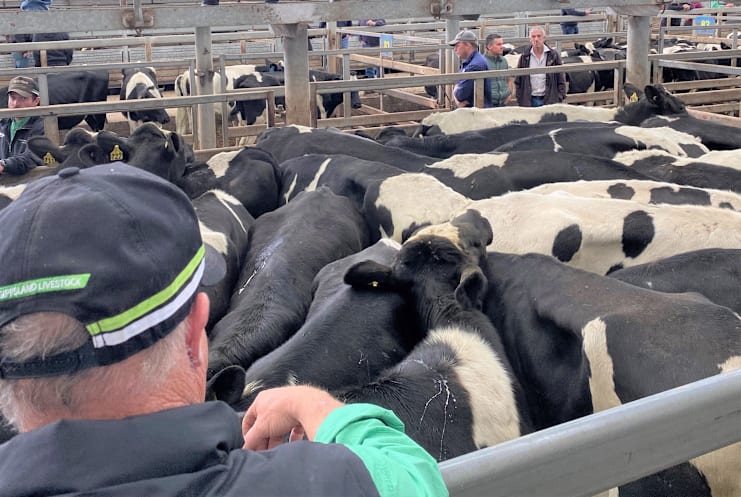THE Federal Government's $1 billion commitment to biosecurity measures to protect domestic agricultural production and the environment from the incursion of overseas diseases is the headline number from Tuesday’s budget for agriculture.
But National Farmers’ Federation president Fiona Simson said the announcement was bittersweet for farmers.
“We welcome the government’s commitment to cement and increase baseline Commonwealth funding into the budget, including through some increased chargers on importers and travellers. It’s important to see that locked in,” Ms Simson said.
“But the move to have farmers foot the bill is a bitter pill to swallow. We’re already significant financial contributors.”
Ms Simson said that after years of consultation she was disappointed to see a scheme that didn’t force “risk creators” to contribute more.
The Nationals Leader David Littleproud was the first to identify the fact that farmers were being forced to pay for the risk posed by importers of, in many cases, their competitors products in a double whammy for local producers and also the shoppers who would inevitably pay for it at the supermarket check out.
He said that among the other losers in the 2023 federal budget were truckers, who will be slapped with a 6 per cent increase on road use charges.
A further $872.5m worth of water security projects is also set to be “abandoned”, according to Mr Littleproud.
“Labor has pushed back critical funding needed for regional communities,” Mr Littleproud said.
“Not only is the Albanese government making us pay for their spending, they are also taking away our future by ripping away the tools we need to produce more and get it on your table cheaper.
And despite Monash MP Russell Broadbent pointing out that neither agriculture or roads got a mention in the Treasurer’s speech, there were still plenty of column centimetres for agriculture in the budget papers including:
- The Government will provide $127.0 million in 2022–23 for the Department of Agriculture, Fisheries and Forestry (DAFF) to meet a funding shortfall predominantly related to cost recovered activities, and increased biosecurity operations including frontline border operations and import clearances. The supplementation funding will ensure that DAFF is able to meet its financial commitments as they fall due, while continuing to deliver its core functions.
- The Government will provide $20.0 million in 2023–24 to fund states and territories to deliver initiatives that contribute to priority actions of the National Soil Action Plan, tailored to regional soil needs and conditions. Funding for this measure is subject to financial contributions from the states and territories. This measure will be offset by redirecting $20.0 million from the National Soil Resources Information System included as part of the 2021–22 Budget measure titled Agriculture 2030, with a further $11.7 million redirected to offset other priorities in the Agriculture, Fisheries and Forestry portfolio.
- The Government will provide $5.6 million over two years from 2022–23 to establish a panel to undertake an independent assessment and consultation process to inform the phase out of live sheep exports by sea.
- The Government will provide $5.0 million over 4 years from 2023–24 to develop a renewed Australian Animal Welfare Strategy (the Strategy) to establish national standards to support improved animal welfare outcomes. The Strategy will re-establish a national framework for priority setting and associated national standards; and measures for the improvement of animal welfare outcomes. This measure builds on the 2022–23 October Budget measure titled Animal Welfare Strategy – Inspector-General of Animal Welfare – establishment. This measure delivers on the Government’s election commitment as published in the Plan for a Better Future.
- The Government will provide an additional $1.0 billion over 4 years from 2023–24 (and $268.1 million per year ongoing) to meet its election commitment to strengthen Australia’s biosecurity system. Funding includes:
- $845.0 million over 4 years from 2023–24 (and $255.3 million per year ongoing) to maintain biosecurity policy, operational and technical functions on a sustainable basis, including regulation, surveillance, domestic preparedness and response, and international engagement and capability development
- $145.2 million over 3 years from 2023–24 to deliver modern digital systems in cargo pathways that are integrated with business systems, cut red tape and streamline regulation and service delivery for importers
- $40.6 million over 4 years from 2023–24 (and $12.0 million per year ongoing) to continue the Indigenous Ranger Biosecurity Program to reduce biosecurity risks in Northern Australia and provide social and economic benefits to First Nations, rural and remote communities. The cost of the measure will be partially offset through introducing:
- Cost recovery arrangements for the clearance of low value imported cargo, which is expected to raise $81.3 million over 3 years from 2024–25.
- A biosecurity protection levy on Australian producers of agricultural, forestry and fishery products from 1 July 2024, set at a rate equivalent to 10 per cent of the 2020–21 industry-led agricultural levies, which is estimated to increase receipts by $153.0 million over 3 years from 2024–25. The levy recognises the benefits that primary producers derive from Australia’s biosecurity system, including detection, identification and response associated with invasive pests and diseases, maximising trade opportunities, and enhancing access to premium overseas markets.
- The Government will provide $38.3 million over 4 years from 2023–24 (and $7.6 million per year ongoing) to support agricultural statistics, climate analysis and upgrades to data and information systems for the Australian Bureau of Agricultural and Resource Economics and Sciences.









